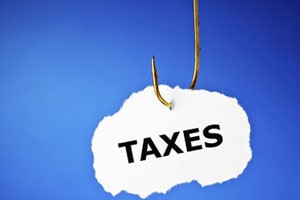With the promised phased reduction of the corporate tax rate and weeding out of exemptions, the minimum alternate tax (MAT) could turn out to be superfluous over a period of time, revenue secretary Shaktikanta Das has indicated.
In an interview with FE, he said the government will announce a roadmap for removing the exemptions and incentives enjoyed by corporates in the current fiscal itself in order to avert any sudden, unforeseen change in companies’ tax outflows. “We will ensure policy certainty and predictability. Legal issues will also be taken care of,” the official said, when asked whether the companies would be told of the schedule of withdrawing the tax breaks and whether removal of some incentives before the announced end-dates weren’t legally hazardous.
In the recent Budget, finance minister Arun Jaitley announced a gradual reduction in the corporate tax rate to 25% from the current 30% over four years starting FY17, but said this would accompany a calibrated removal of tax exemptions. Tax incentives practically bring down the corporate tax rate, and the average effective rate is around 23%, while many large corporates that are investing heavily find the actual rate falls to much lower levels. This is the reason why the government levies MAT on the book profits of companies at 18.5%, as the threshold below which the rate can’t fall.
“Over a period of time, that is, in the long run, MAT may not be necessary. But that issue is yet to be examined,” Das said. He added any decision on this (MAT removal) would be the outcome of a government review and a legislative process at the appropriate time, which, he said, cannot be prejudged at this juncture.
The government collects about Rs 37,000 crore as MAT annually; the total corporate tax collection in FY15 was Rs 4.26 lakh crore. Over a span of years, companies are eligible to use the MAT paid in the relatively low-tax years to meet the tax liability in the other years.
Das said the government was also not in favour of extending any MAT concessions to SEZ units and developers as it could lead to similar demands from other sectors. He explained that the problems these export-oriented enclaves faced were complex and some were on account of the global economic slowdown, rather than tax-related. Prior to the Budget, he noted, the government had allowed SEZs to use their social infrastructure such as hospitals for customers outside these duty-free enclaves as well, with the condition that they forwent the duty concessions availed in setting up these facilities.
“No class of taxpayers has been exempted from MAT. If someone is making profit, he should pay duty on it,” he said.
The secretary clarified that levy of MAT and the tax notices issued to foreign portfolio investors were perfectly legal. “Some FPIs (foreign portfolio investors) had earlier approached the Authority for Advance Rulings (AAR), which favoured the department’s view saying MAT was applicable on them,” he said.
“When AAR chaired by a Supreme Court judge says that MAT is leviable, naturally, the department has to levy MAT. That action is perfectly legal. But considering the difficulties expressed by FPIs, the government has announced an exemption to them from MAT prospectively,” Das explained.
In the 2012-13 fiscal, companies with profits before tax of Rs 500 crore or above, which contributed 57% of the government’s corporate tax revenue, had an effective tax rate of 20.97%.
The effective rate, however, was 26.7% in the case of companies with profits before tax up to Rs 1 crore, suggesting that large companies were benefiting from exemptions more than the smaller ones.


